At the beginning of June, our Living Lab Energy Campus (LLEC) received a visit from Golden, Colorado: our partners from the National Renewable Energy Laboratory (NREL) were our guests. Together, we spent four days on an extensive program with a tour of the campus, five lab visits, lots of in-depth discussions and a small cultural program. In addition to shared interests and synergies in the field of energy systems research, the visit also focused on the context and general conditions of energy systems research. In particular, issues relating to the construction and operation of innovative research facilities within established campus infrastructure, as well as program management and the establishment of matrix organizations were discussed in depth.
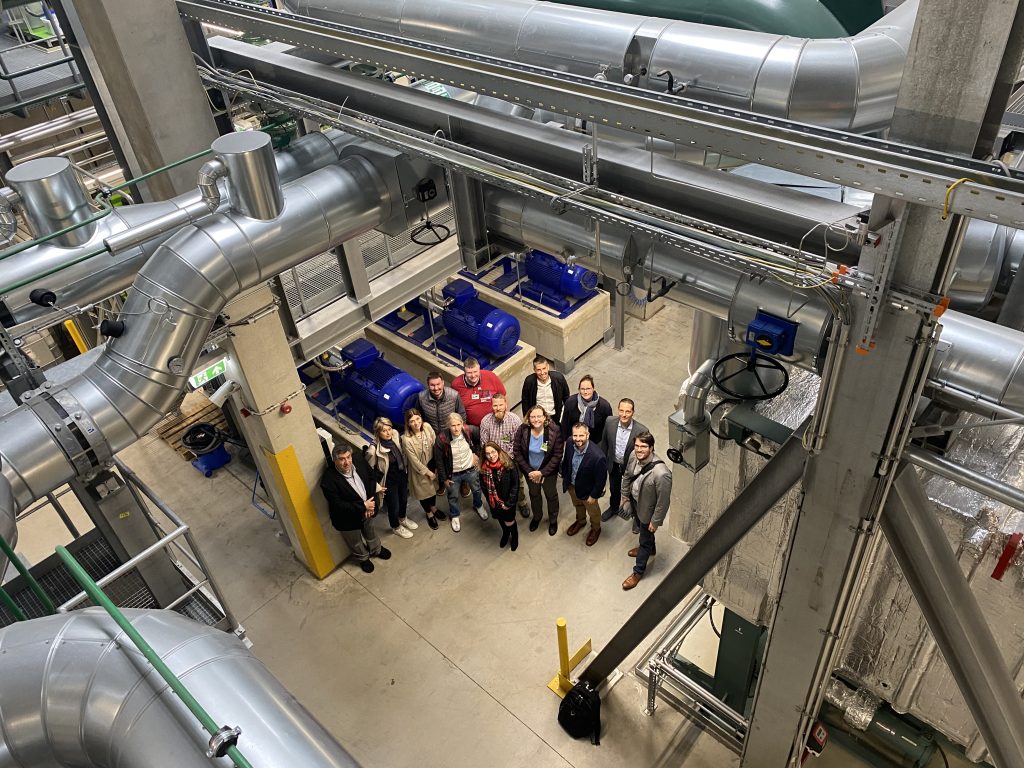

1 LLEC in a nutshell
On our first day together, an introductory session in the morning, was followed by a tour to our main LLEC-demonstrators including PV installations, hydrogen production and storage facilities, large battery systems and several “cognitive buildings”. One of the highlights of our tour was FZJ’s thermal energy system, which supplies the entire campus with large quantities of heating, cooling and electricity. While the system is not itself part of the LLEC, our LOHC One Reactor for the storage and withdrawal of hydrogen in a carrier liquid will be installed directly next to the thermal supply system and will be closely coupled to it.
2 Lab visits
Starting on the afternoon of our first day, we were able to visit five research institutes involved in the LLEC. Starting with the Institute of Energy Materials and Devices 3 (IMD-3, former IEK-5), we had a lab tour and were able to talk directly to some of the scientists about their work. After an overview presentation on the work of the institute, we discussed the importance and future of photovoltaic research for the transformation of energy systems.


At the Institute of Energy Technologies-1 (IET-1, former IEK-9), we were presented impressive research on stationary and mobile battery storage systems, de-risking and digital twins of PEM-electrolysers, as well as reversible solid oxide cells and its digital twin.
Hydrogen production, hydrogen safety and hydrogen storage constitute crucial elements of the LLEC. The Institute of Energy Technologies-4 (IET-4, formerly IEK-14) conducts research on the first two topics. In addition to various laboratories and our large electrolysis test stand, we also visited the LLEC’s 400kw stack. In the subsequent discussion, the topic of hydrogen safety in particular was emphasized as essential for the success of the transition of energy systems.
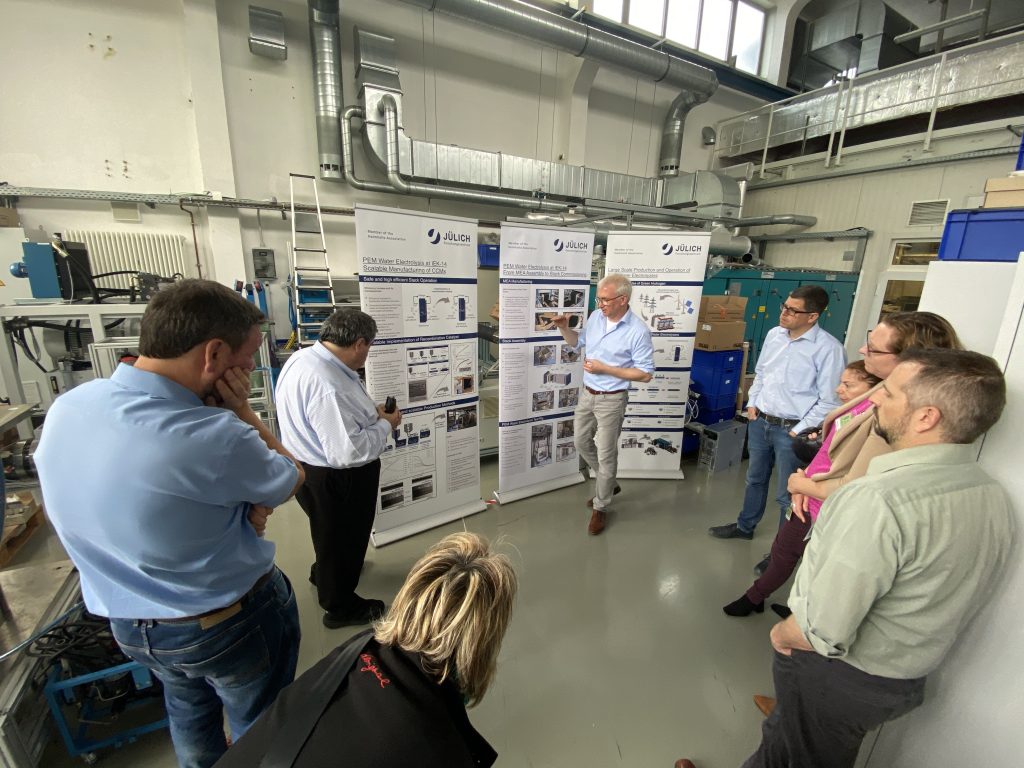
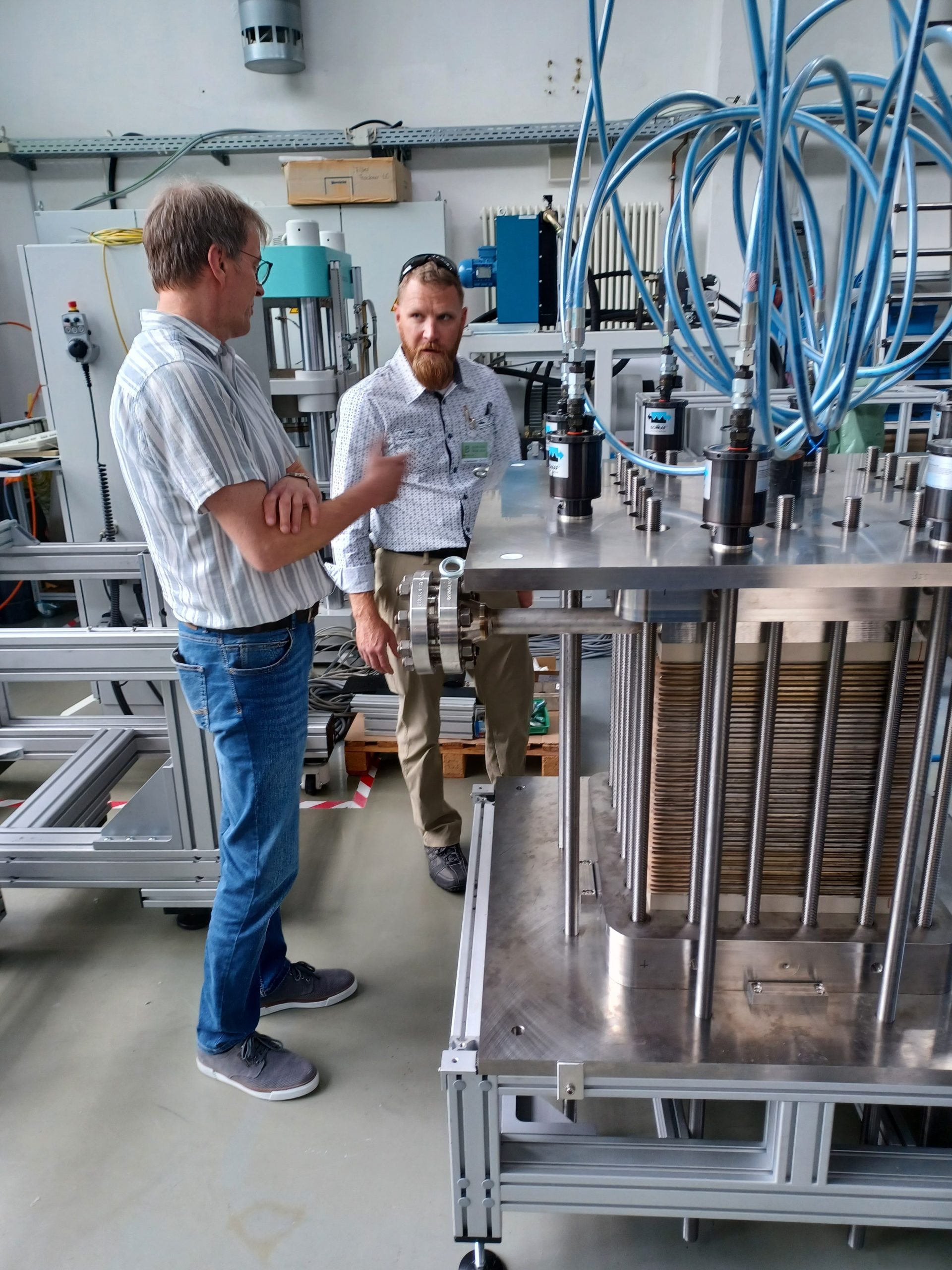
Hydrogen storage is a major focus of the Institute of Energy Technologies-2 (IET-2, former IEK-11) and the Institute for sustainable hydrogen economy (INW). At their site in “Brainergy Park”, right outside of FZJ’s main campus, we were introduced first of all to the LOHC concept (Liquid Organic Hydrogen Carrier), which will be used within the LLEC for hydrogen storage. In addition, we learned about the Helmholtz-Cluster Hydrogen, a Structural Change (“Strukturwandel”) project providing framework for an optimal transition of a former lignite mining region towards a renewable energy landscape.
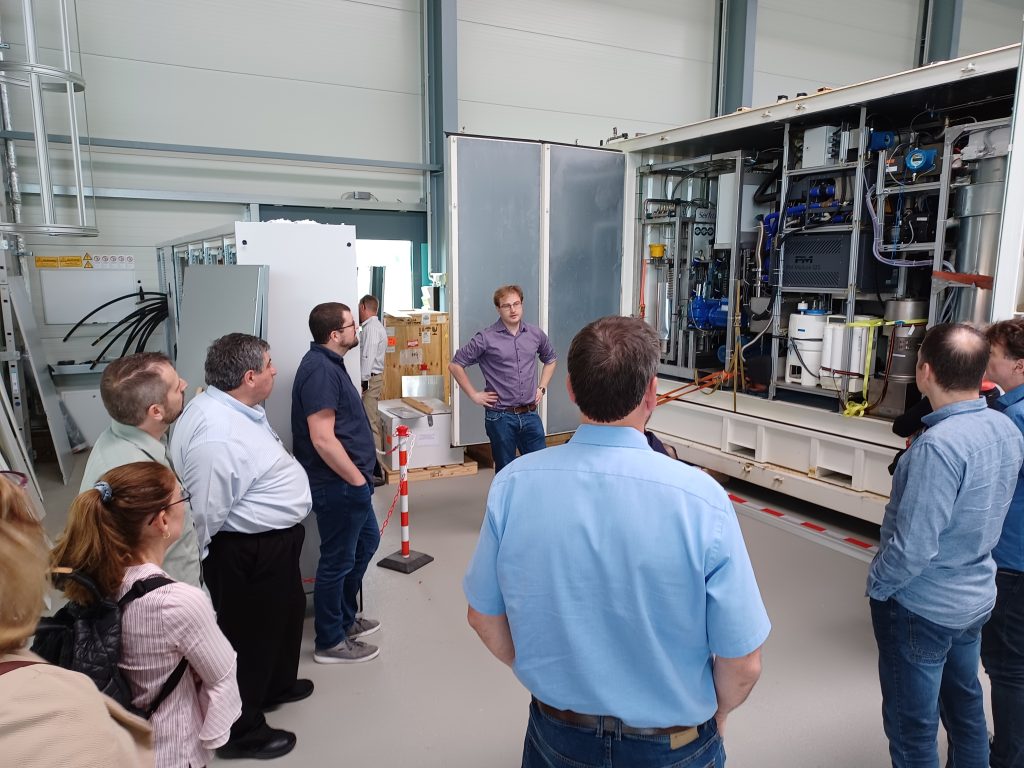
One strong common interest between NREL and LLEC is the development of models and algorithms for simulation, optimization and control of energy systems. Those topics were targeted during our lab visit to the Institute of Climate and Energy Systems-1 (ICE-1, former IEK-10; https://www.fz-juelich.de/en/ice/ice-1 ). There, we learned a lot about ICE-1’s research in the field and discussed opportunities for cooperation in this field. In addition, our guests from NREL gave an overview of their approach to energy systems as well as to their work on modeling and analyzing building and district energy systems.

3 Research in context
Research never takes place in a „vacuum“. Instead, a wide variety of contextual factors and framework conditions must be taken into account. This includes, for example, participation and user involvement, challenges and areas of tension between science and infrastructure, as well as challenges in the management of matrix organizations.

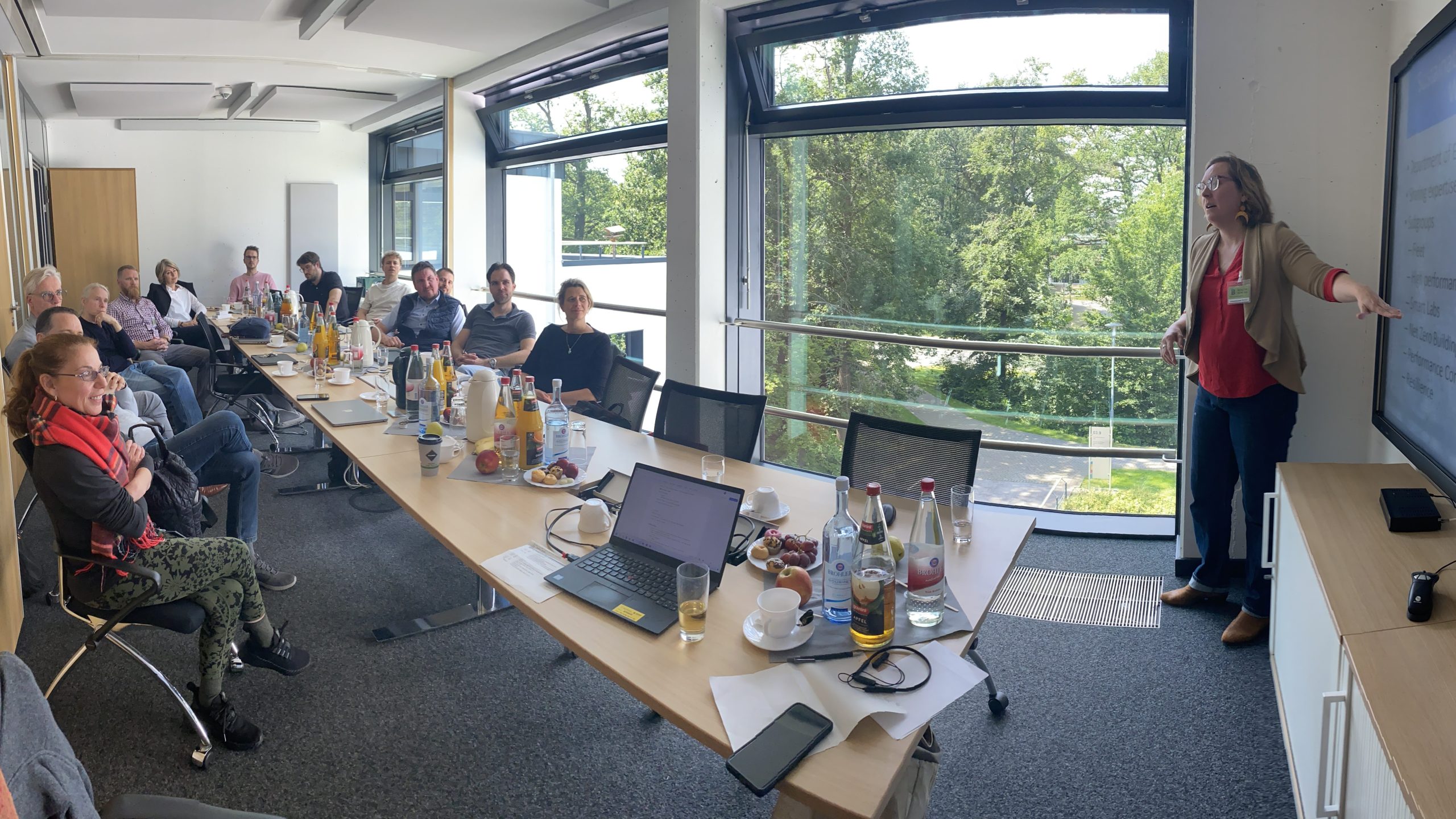
The different perspectives on these topics were presented and discussed during Day 3 and 4 of the visit.
Some of the main take-aways from these discussions and from across the week include:
- „The building itself is a research object„: Campus buildings are traditionally built so that scientists can reliably carry out their research in them. With an “intelligent campus,” buildings and campuses themselves become objects and tools for research. Naturally it would be easier to run steady state systems. However, since the world is constantly changing, the risks associated with change must be accepted. This applies right down to the hiring policy.
- “Successful Innovation needs some facilitating between specialized researchers, infrastructure specialists, and the outside-world”: Scientists often concentrate on their own specialized questions within their respective disciplines. At the same time, infrastructure and operations specialists focus on the security and reliability of systems. However, for innovations to be implemented and researched in a real-life setting, often a type of intermediary approach is needed. These can be, for example, the respective „intelligent campus“ teams at NREL and FZJ, whose job it is, to think outside the boxes of disciplines, establish new structures and connect innovative research to the outside world.
- “You can develop all the technology in the world – if you don’t understand how to make it applicable to the outside world, you won’t change anything”: Intelligent campuses as living labs provide unique opportunities for bridging the gap between early science and technology transfer. They are necessary think tanks and facilitators, for tackling climate change cannot be a matter for researchers alone. After all, some aspects of a new technology (workforce issues, chains of production etc.) are questions of their own that cannot be addressed using scientific methods only. In addition, intelligent campuses can make research and research institutions visible to society; they are a tool for communication that helps people to value the institutions and their potential contribution to societal problems.
- “Think less in terms of solar, hydrogen etc. – think of energy pathways, instead”: NREL and the LLEC, both, take holistic and systemic approaches to the energy transition. This enables them to develop and investigate comprehensive solutions for future energy systems.
- “Engagement is crucial”: Engaging users on campus and external actors is crucial for successful energy research and innovation.
- “Better together”: There are several common interests and synergies between NREL and LLEC. We are therefor going to further concretize and expand our cooperation in the next few months. This will enable us to make optimum use of synergies and work together across national and continental borders to target current problems in the field of energy transition.

No Comments
Be the first to start a conversation